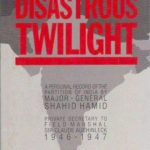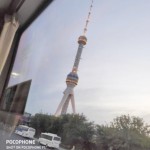AREESHA ANWER RESEARCH OFFICER AT CISSS.
The nature of warfare in modern times has evolved. Emerging technologies have transformed the essence of war. Cyberspace has become the new battlefield. The use of cyberattacks to sabotage a state’s critical infrastructure, employing cyber espionage to spy over state government and institutions and the use of the Internet for firehosing or flooding for propaganda and misinformation have posed several novel challenges to states. Moreover, the grave threat of increasing ransomware has stirred major concerns around the globe. This is evident in the case of the US where ransomware attacks on Colonial Gas Pipeline and JBS Meat and software supply chain attacks such as hacking of SolarWinds reinforced cybersecurity across the US critical infrastructure. These attacks also led President Biden to issue a National Security Memorandum to improve cybersecurity for national security. In his book ‘The Wires of War: Technology and Global Struggle for Power’, Jacob Helberg discusses the use of technology-driven instruments by states in their struggle for power. He terms Internet as the new theatre of geopolitical conflict. According to Helberg, the 21st century wireless war is being fought between autocracies and democracies, where he refers to China and Russia as major autocratic actors. In 2016, Jacob Helberg was appointed as Google’s global lead for news policy. During his time there, Helberg fought against propaganda, disinformation and foreign interference in the US elections. The Wires of War is a detailed account of Helberg’s personal experiences and insight while serving in Silicon Valley. The book also provides an understanding of the nuanced issues that only a few are aware of. The Wires of War explains emerging warfare in the context of ‘gray war’ and how it is shaping the 21st century. The author argues that the algorithms that govern our online lives “may be one of the most powerful radicalizing instruments of the 21st century.” He reminds his readers that experts predicted that the Internet’s buoyant freedom of expression would have an adverse impact on autocracies. However, that is not the case per se. Instead, the Internet has accelerated misinformation where a single click displays thousands of bizarre ideas, assumptions, opinions and stories. Ironically these false stories spread six times faster than the actual news. The author defines flooding or firehosing as the process where the Internet is flooded with misinformation so that it becomes difficult to separate authentic from fake information. Helberg points out how the culture of skimming through the first few google results to verify a truth claim has widely prevailed in the digital age. Moreover, Helberg explains how the over dependence of users on the Internet and their online behavior expose their personal information. He exemplifies his argument with a research conducted by Michael Kosinski who found that it takes only 68 Facebook likes to easily predict a person’s race, sexual orientation and political affiliation. Going forward, Helberg recalls the US claims of Russian meddling in the 2016 US elections, especially the Russian penetration of the computer network of the Democratic National Committee DNC. He further focuses on the spread of fake news by Russia’s Internet Research Agency IRA and explains how advances in artificial intelligence, data gathering and synthetic media such as deepfakes could replicate propaganda and disinformation campaigns that will have greater consequences in the near future. The author also expresses concerns over China’s technological advancements. However, he completely ignores the use of propaganda and cyberattacks by the US, while keeping the reader’s focus entirely on Russia and China. Readers also get a recap of the debates about: (i) NATO’s mutual defence treaty and whether taking down Internet infrastructure constitutes an “attack” under Article 5 of its charter; (ii) the advances in Chinese technological infrastructure, from Huawei’s communications devices to Apple’s Chinese-made iPhones; and (iii) the threat of hackers shutting down massive power sectors of major cities. Helberg explains that cyber aggression or cyber war would not relate to which country controls more territory or enjoys greater military strength in contemporary times. Instead, he views ownership of the channels that spread information to billions of people, as well as Internet cables and data as significant for states in the 21st century. He proceeds to trace how modern-day warfare will potentially subjugate infrastructure, economies, privacy, innovation, cultures and norms. In relation to that, Helberg gives example of an Iranian cyberattack on Aramco Oil Company that melted down 35,000 hard drives and forced the company to buy 50,000 new computers. As a result, the global price for hard drives drove up for half a year. To counter the threat of cyberattacks, propaganda, disinformation, espionage or foreign interference, the author suggests that the US should respond by vitally rebuilding its national strength. He proposes that there should be appropriate investments in areas of innovation and technology so that the US government and the private sector could build new high-tech manufacturing centers while securing the back-end and enhancing competitiveness. In the gray war, according to Helberg, the best offence boils down to a strong defence. Areesha Anwer is Research Officer at the Center for International Strategic Studies Sindh (CISSS). The book review was first published in CISS Insight Journal of Strategic Studies Vol 10, No 2 (2022).







